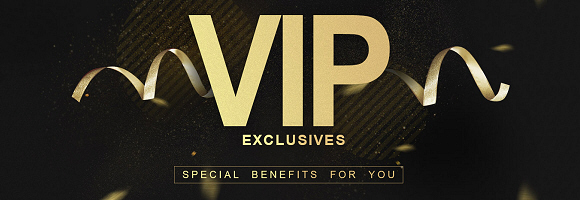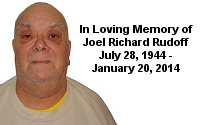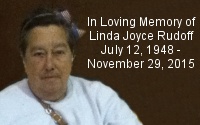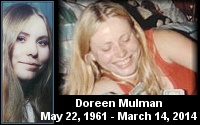| « Ghostbuster's Handbook 2016 Movie Book Review | Ghostbusters Collectables Book Review » |
Ghostbusters 2016 Movie Production Notes
ABOUT THE GHOSTS AND THE VISUAL EFFECTS
To bring the ghosts into our world, Paul Feig knew he would be calling on CG artists to create visual effects. And while he wanted to create a spectacle, he wanted to do it in a grounded way that fit the aesthetic of the film he was making.
"So many movies with CG effects are all created in the computer, with actors performing with a tennis ball on a stick," Feig explains. "I didn't want that - I wanted interaction with the actors. I wanted my ghosts to look like people - especially because this movie is a comedy."
Feig was also influenced by the look of the original 1984 film, in which the ghosts were all captured with old-school camera tricks and techniques. Although the film would definitely use contemporary visual effects, Feig admired the old-school look and sought to emulate it.
Visual Effects Supervisor Peter G. Travers says that though the film represents a blend of old-school and new-school techniques, that's not so unusual. "Old-school techniques of how you shoot a scene have not changed," he says. The difference, he continues, is in how many more options filmmakers have for enhancing a scene after it has been shot. "Where we can go now, and what we can do, or augment, or replace, has increased exponentially."
Capturing as much as possible in camera was also extremely important to Travers because that was the way that the visual effects match Feig's style of direction, rather than the other way around. "Paul has an incredible ability to make very appealing, very financially successful comedies. And so much of that is to let him, the Director of Photography Robert Yeoman, and the actors find the comedy in multiple, sometimes long takes. The humor is constantly evolving, even in post. On the other hand, VFX is very prep-oriented. So the question was, how to you incorporate visual effects into his directing style?" Travers relates. "That was the biggest trick. We couldn't do multiple passes - we had to let Paul and the cinematographer and the production designer figure out what they wanted. Take 10 or take 15 might be the take that's in the movie, but we had to make sure that we were ready to go with every take."
The best example of the way the VFX department gave the filmmakers the tools to find the comedy creatively is in the proton beams, says Travers. "We put LED light caps on the tips of the proton blasters," he says. "That created interactive light. The girls could even fire the guns, and the light would come out of the gun cap. They could control when they were firing, there'd be a soft red light that would go where the target was. Paul could change the dialogue, or the camera angle, and everything would still work."
When it came to the ghosts themselves, the first step was for Jefferson Sage's art department to design the look of the specters. When that was completed, the visual effects artists, mainly at Moving Picture Company, Sony Pictures Imageworks, Iloura, and ZeroVFX, under Travers' supervision, put their special touch on the ghosts.
"The first question I had for Paul was, 'Do the ghosts glow?'" says Travers. "If they did - and it turns out they did - then that sent us down a path of how to achieve that."
The reason the ghosts' glow was so important was one reason: light. One of the most challenging parts of CG animation is to make it look like it was always there, and lighting the shots practically is a particular challenge. Not only would the ghosts have to be lit by the ambient light from the scene, but the glow they emit would have to reflect off of the world around them. "CG has to have a symbiotic relationship with the footage that is shot on set," says Travers. "So if the ghosts glowed, it would have to look like the ghosts belonged in the scene, from an interactive lighting standpoint."
With that effect in mind, the filmmakers found a way to do it. "We took real actors, and lit them with lighting effects and LEDs, so we could capture a performance," Feig explains. "Then, we took it into the ethereal world to make it ghostly and add effects. But at its heart is a human quality and a human performance."
To achieve that, the VFX team worked closely with the wardrobe team, headed by costume designer Jeffrey Kurland. "First we designed the costumes, and then we made light suits that the actors wore under their costumes to let the glow come through," says Kurland. "The fabrics on the costumes had to be created, because they had to be thin enough to emit the glow, but still look like the actual fabric of whatever costume the ghost is supposed to be wearing."
"It was an interesting challenge to do, design-wise, to not only incorporate the design of a period effect, but then to light it," says Kurland. "It was great to work in tandem with the VFX crew - a great experience to do something so collaborative with the other people on the movie. You couldn't do Ghostbusters unless it was a team effort."
A good example is Gertrude, the first ghost the Ghostbusters encounter. "Bess Rous was cast, Jeffrey Kurland designed her outfit, and then wardrobe sewed LEDs into the costume," says Travers. "When we shot it, Bess was on a platform that went up and down and we put fans in her outfit to give an ethereal, blowing-in-the-wind look, and later, we could go into the computer and replace what we had to replace to turn her into a ghost. Glenn Melenhorst supervised the team at Iloura to achieve this effect."
"Not only did we make Gertrude's gown," says Kurland, "but the crinoline and the corset underneath were all lit, a suit of lights, to emanate the glow to come through the actual costume," says Kurland.
By mixing old-school effects techniques and new-school CG animation, the film got the best of both worlds. "When we shot it, because Bess was there in the frame, the Ghostbusters knew where to look, they knew where her face was, she's emoting, the Ghostbusters are emoting... it all works. Another great example of this is the subway tunnel scene, where the ghost on set, played by David Gruber Allen, was littered with LEDs, in which he became a primary source of lighting in the dark tunnel set. And then ZeroFX in Boston took over the ghost in digital form, in some cases fully taking over the performance, along with extending our set and creating a fully digital train."
Again, Kurland's team was on hand to help. "The striped prison uniform was sanded down to a fine, fine thin cloth, so you could see the light coming through it," says Kurland.
It wouldn't be Ghostbusters without Slimer, and indeed, the fan-favorite ghost makes an appearance in the new film. Though in the final film, Slimer would be an entirely CG creation (created under the supervision of Daniel Kramer at Sony Pictures Imageworks), the character began just as it did in the production of the 1984 film, with a Slimer puppet. "CG characters have come such a long way since then," he says. "The puppet was not able to go to the emotive level that we could do with CG. But it was very useful to have some representation on set - if we had just decided that we were going to use a CG Slimer and there was no representation of the ghost on set, it wouldn't look as good as it does in the final film."
At the Ghostbusters' first call, they are tasked with exorcizing a flying ghost from a rock concert. "We actually had a drone flying around with LEDs, which we later replaced with the rock concert ghost," says Travers. "Again, eyelines for the entire crowd were all good - they knew exactly where to look. And when the ghost would come close to a wall, we'd get a fantastic green spill from the LEDs. Our glowing ghost, even when it's flying way up near the ceiling, looks like it belongs in that environment. This work was also achieved by Iloura in Australia."
Another of Travers' favorites are the parade balloon ghosts. "They're from the 1920s Macy's parade - they're gigantic - and they happen to glow, which would be very unusual," he says. "We got actual lighting balloons that we moved around on the set, to try to get the timing right. It gave us a clear picture on how the reflections would work in the windows and how everything around them would respond to the lighting. You'll never see the live-action balloons in the movie, but they were absolutely necessary for our reference." Imageworks then created fully digital balloons, complete with simulations to create a half-in-control, half-blowing-in-the-wind look. The explosions of the balloons were computationally enormous.
Ultimately, at the film's climax, there are more than 1000 ghosts descending on New York. The entire climax of the film was achieved by the Moving Picture Company, under the supervision of David Seager. "This is where the film gets really big, and MPC poured so much work into the details," says Travers. Travers and his team had 20 basic ghosts designs in the film, many of which could be varied, mixed and matched to create any number of possibilities.
ABOUT THE COSTUMES
In addition to designing, dressing, and even lighting the undead characters, costume designer Jeffrey Kurland was also responsible for dressing the living characters as well.
"It was important to me that the characters have very distinct personalities," says Paul Feig, describing the look of the characters on film. "I didn't want them to be cartoons, but definitely people who grab your attention. While we're keeping the movie grounded, I liked the idea they could have these eclectic and eccentric personalities that play out."
As with the overall design, the costumes were meant to be very grounded and real-world - all the better for the fantastical plot and hilarious characters to play against. And naturally, the central costume of the film was the Ghostbusters' uniforms.
"My inspiration was the script itself," says costume designer Jeffrey Kurland. "Patty is working for the MTA and says, 'I can get you these jumpsuits where I work.' We added the reflective tape - it makes sense, you're working in the subway, when the lights come on you, you have to be seen. And then we added the reflective tape in other places, which you're supposed to assume that Patty did - she brings a certain flair and cool as she brings the suits to another level."
As it turns out, Kurland did not go to the actual MTA for inspiration here. Feig wanted jumpsuits, but the MTA workers do not wear jumpsuits in the tunnels.
In addition to the jumpsuits, each of the four main characters had a distinctive look that was reflective of their personalities. "It's a very character-driven piece," Kurland says, which required each character to stand out on her own.
Abby's costumes are the most thrown together, as befits someone who doesn't give a lot of thought to her appearance. "She's a Brainiac, very smart, not really caring about her clothes - it's very workaday," he says. "Unlike a lot of characters that Melissa has played, she isn't meant to be a showpiece. Interesting lines, interesting patterns and color choices, but nothing outlandish."
Striking a similar note, Abby's childhood friend, Erin, dresses "conservatively, but in a preppy way," says Kurland. "She's a Columbia professor, going for tenure, so she's trying to make an impression. She's not the nerd that she might have been in college or high school - she's grown out of that - but not fully; her insecurity and feelings still show. She's very buttoned-up. You see all of that in the plaid suits and the pleated skirts - but they're short and flirty in their own way, and she wears a nice high heel. "
Of all the characters, Holtzmann likely has the most unique look. "Holtzmann was my wild card," says Kurland. "She's got eclectic tastes, she's all over the place, she mixes things that nobody would ever think to mix, and it just works for her. She's wearing jodhpurs at one point, she's wearing painted overalls that you assume she painted herself, she never wears two socks that match. Not many people are wandering around in burgundy smoking jackets and getting away with it."
"The clothes are a huge part of the character, and I said, 'We have to have some whackadoo hair to match,'" says Kate McKinnon. "While I was trying on the clothes, I had just come from an event the night before - my hair was so full of hairspray that it was standing on end, and that was the start. I exchanged emails with Brenda McNally, the Hair Department Head and artist who would do my hair, and I was sending her pictures of Tilda Swinton and St. Vincent. Without the look, I couldn't have been able to play this character. It's pretty cool."
Leslie Jones also has a unique look as Patty. "She's getting a little older and she still wants to have some pizzazz," she says. "So that's where the colors come in: her attitude is, 'I'm going to let you know I'm here.' You're going to know when Patty walks into the room."
"I did a lot of research in the subways, looking at the ladies who work in the stations," says Kurland, "It was very interesting, because they all wear that uniform that you see Patty in - the blue pants and the scarf and the blue shirt - but their hair and their nails and their jewelry is very personal. Their personal flair is in their accessories, because they can't change that uniform. That was my clue, and the braided hair is something I took from that research: it keeps it neat and in place, but it has a femininity to it that looks great."
To bring the ghosts into our world, Paul Feig knew he would be calling on CG artists to create visual effects. And while he wanted to create a spectacle, he wanted to do it in a grounded way that fit the aesthetic of the film he was making.
"So many movies with CG effects are all created in the computer, with actors performing with a tennis ball on a stick," Feig explains. "I didn't want that - I wanted interaction with the actors. I wanted my ghosts to look like people - especially because this movie is a comedy."
Feig was also influenced by the look of the original 1984 film, in which the ghosts were all captured with old-school camera tricks and techniques. Although the film would definitely use contemporary visual effects, Feig admired the old-school look and sought to emulate it.
Visual Effects Supervisor Peter G. Travers says that though the film represents a blend of old-school and new-school techniques, that's not so unusual. "Old-school techniques of how you shoot a scene have not changed," he says. The difference, he continues, is in how many more options filmmakers have for enhancing a scene after it has been shot. "Where we can go now, and what we can do, or augment, or replace, has increased exponentially."
Capturing as much as possible in camera was also extremely important to Travers because that was the way that the visual effects match Feig's style of direction, rather than the other way around. "Paul has an incredible ability to make very appealing, very financially successful comedies. And so much of that is to let him, the Director of Photography Robert Yeoman, and the actors find the comedy in multiple, sometimes long takes. The humor is constantly evolving, even in post. On the other hand, VFX is very prep-oriented. So the question was, how to you incorporate visual effects into his directing style?" Travers relates. "That was the biggest trick. We couldn't do multiple passes - we had to let Paul and the cinematographer and the production designer figure out what they wanted. Take 10 or take 15 might be the take that's in the movie, but we had to make sure that we were ready to go with every take."
The best example of the way the VFX department gave the filmmakers the tools to find the comedy creatively is in the proton beams, says Travers. "We put LED light caps on the tips of the proton blasters," he says. "That created interactive light. The girls could even fire the guns, and the light would come out of the gun cap. They could control when they were firing, there'd be a soft red light that would go where the target was. Paul could change the dialogue, or the camera angle, and everything would still work."
When it came to the ghosts themselves, the first step was for Jefferson Sage's art department to design the look of the specters. When that was completed, the visual effects artists, mainly at Moving Picture Company, Sony Pictures Imageworks, Iloura, and ZeroVFX, under Travers' supervision, put their special touch on the ghosts.
"The first question I had for Paul was, 'Do the ghosts glow?'" says Travers. "If they did - and it turns out they did - then that sent us down a path of how to achieve that."
The reason the ghosts' glow was so important was one reason: light. One of the most challenging parts of CG animation is to make it look like it was always there, and lighting the shots practically is a particular challenge. Not only would the ghosts have to be lit by the ambient light from the scene, but the glow they emit would have to reflect off of the world around them. "CG has to have a symbiotic relationship with the footage that is shot on set," says Travers. "So if the ghosts glowed, it would have to look like the ghosts belonged in the scene, from an interactive lighting standpoint."
With that effect in mind, the filmmakers found a way to do it. "We took real actors, and lit them with lighting effects and LEDs, so we could capture a performance," Feig explains. "Then, we took it into the ethereal world to make it ghostly and add effects. But at its heart is a human quality and a human performance."
To achieve that, the VFX team worked closely with the wardrobe team, headed by costume designer Jeffrey Kurland. "First we designed the costumes, and then we made light suits that the actors wore under their costumes to let the glow come through," says Kurland. "The fabrics on the costumes had to be created, because they had to be thin enough to emit the glow, but still look like the actual fabric of whatever costume the ghost is supposed to be wearing."
"It was an interesting challenge to do, design-wise, to not only incorporate the design of a period effect, but then to light it," says Kurland. "It was great to work in tandem with the VFX crew - a great experience to do something so collaborative with the other people on the movie. You couldn't do Ghostbusters unless it was a team effort."
A good example is Gertrude, the first ghost the Ghostbusters encounter. "Bess Rous was cast, Jeffrey Kurland designed her outfit, and then wardrobe sewed LEDs into the costume," says Travers. "When we shot it, Bess was on a platform that went up and down and we put fans in her outfit to give an ethereal, blowing-in-the-wind look, and later, we could go into the computer and replace what we had to replace to turn her into a ghost. Glenn Melenhorst supervised the team at Iloura to achieve this effect."
"Not only did we make Gertrude's gown," says Kurland, "but the crinoline and the corset underneath were all lit, a suit of lights, to emanate the glow to come through the actual costume," says Kurland.
By mixing old-school effects techniques and new-school CG animation, the film got the best of both worlds. "When we shot it, because Bess was there in the frame, the Ghostbusters knew where to look, they knew where her face was, she's emoting, the Ghostbusters are emoting... it all works. Another great example of this is the subway tunnel scene, where the ghost on set, played by David Gruber Allen, was littered with LEDs, in which he became a primary source of lighting in the dark tunnel set. And then ZeroFX in Boston took over the ghost in digital form, in some cases fully taking over the performance, along with extending our set and creating a fully digital train."
Again, Kurland's team was on hand to help. "The striped prison uniform was sanded down to a fine, fine thin cloth, so you could see the light coming through it," says Kurland.
It wouldn't be Ghostbusters without Slimer, and indeed, the fan-favorite ghost makes an appearance in the new film. Though in the final film, Slimer would be an entirely CG creation (created under the supervision of Daniel Kramer at Sony Pictures Imageworks), the character began just as it did in the production of the 1984 film, with a Slimer puppet. "CG characters have come such a long way since then," he says. "The puppet was not able to go to the emotive level that we could do with CG. But it was very useful to have some representation on set - if we had just decided that we were going to use a CG Slimer and there was no representation of the ghost on set, it wouldn't look as good as it does in the final film."
At the Ghostbusters' first call, they are tasked with exorcizing a flying ghost from a rock concert. "We actually had a drone flying around with LEDs, which we later replaced with the rock concert ghost," says Travers. "Again, eyelines for the entire crowd were all good - they knew exactly where to look. And when the ghost would come close to a wall, we'd get a fantastic green spill from the LEDs. Our glowing ghost, even when it's flying way up near the ceiling, looks like it belongs in that environment. This work was also achieved by Iloura in Australia."
Another of Travers' favorites are the parade balloon ghosts. "They're from the 1920s Macy's parade - they're gigantic - and they happen to glow, which would be very unusual," he says. "We got actual lighting balloons that we moved around on the set, to try to get the timing right. It gave us a clear picture on how the reflections would work in the windows and how everything around them would respond to the lighting. You'll never see the live-action balloons in the movie, but they were absolutely necessary for our reference." Imageworks then created fully digital balloons, complete with simulations to create a half-in-control, half-blowing-in-the-wind look. The explosions of the balloons were computationally enormous.
Ultimately, at the film's climax, there are more than 1000 ghosts descending on New York. The entire climax of the film was achieved by the Moving Picture Company, under the supervision of David Seager. "This is where the film gets really big, and MPC poured so much work into the details," says Travers. Travers and his team had 20 basic ghosts designs in the film, many of which could be varied, mixed and matched to create any number of possibilities.
ABOUT THE COSTUMES
In addition to designing, dressing, and even lighting the undead characters, costume designer Jeffrey Kurland was also responsible for dressing the living characters as well.
"It was important to me that the characters have very distinct personalities," says Paul Feig, describing the look of the characters on film. "I didn't want them to be cartoons, but definitely people who grab your attention. While we're keeping the movie grounded, I liked the idea they could have these eclectic and eccentric personalities that play out."
As with the overall design, the costumes were meant to be very grounded and real-world - all the better for the fantastical plot and hilarious characters to play against. And naturally, the central costume of the film was the Ghostbusters' uniforms.
"My inspiration was the script itself," says costume designer Jeffrey Kurland. "Patty is working for the MTA and says, 'I can get you these jumpsuits where I work.' We added the reflective tape - it makes sense, you're working in the subway, when the lights come on you, you have to be seen. And then we added the reflective tape in other places, which you're supposed to assume that Patty did - she brings a certain flair and cool as she brings the suits to another level."
As it turns out, Kurland did not go to the actual MTA for inspiration here. Feig wanted jumpsuits, but the MTA workers do not wear jumpsuits in the tunnels.
In addition to the jumpsuits, each of the four main characters had a distinctive look that was reflective of their personalities. "It's a very character-driven piece," Kurland says, which required each character to stand out on her own.
Abby's costumes are the most thrown together, as befits someone who doesn't give a lot of thought to her appearance. "She's a Brainiac, very smart, not really caring about her clothes - it's very workaday," he says. "Unlike a lot of characters that Melissa has played, she isn't meant to be a showpiece. Interesting lines, interesting patterns and color choices, but nothing outlandish."
Striking a similar note, Abby's childhood friend, Erin, dresses "conservatively, but in a preppy way," says Kurland. "She's a Columbia professor, going for tenure, so she's trying to make an impression. She's not the nerd that she might have been in college or high school - she's grown out of that - but not fully; her insecurity and feelings still show. She's very buttoned-up. You see all of that in the plaid suits and the pleated skirts - but they're short and flirty in their own way, and she wears a nice high heel. "
Of all the characters, Holtzmann likely has the most unique look. "Holtzmann was my wild card," says Kurland. "She's got eclectic tastes, she's all over the place, she mixes things that nobody would ever think to mix, and it just works for her. She's wearing jodhpurs at one point, she's wearing painted overalls that you assume she painted herself, she never wears two socks that match. Not many people are wandering around in burgundy smoking jackets and getting away with it."
"The clothes are a huge part of the character, and I said, 'We have to have some whackadoo hair to match,'" says Kate McKinnon. "While I was trying on the clothes, I had just come from an event the night before - my hair was so full of hairspray that it was standing on end, and that was the start. I exchanged emails with Brenda McNally, the Hair Department Head and artist who would do my hair, and I was sending her pictures of Tilda Swinton and St. Vincent. Without the look, I couldn't have been able to play this character. It's pretty cool."
Leslie Jones also has a unique look as Patty. "She's getting a little older and she still wants to have some pizzazz," she says. "So that's where the colors come in: her attitude is, 'I'm going to let you know I'm here.' You're going to know when Patty walks into the room."
"I did a lot of research in the subways, looking at the ladies who work in the stations," says Kurland, "It was very interesting, because they all wear that uniform that you see Patty in - the blue pants and the scarf and the blue shirt - but their hair and their nails and their jewelry is very personal. Their personal flair is in their accessories, because they can't change that uniform. That was my clue, and the braided hair is something I took from that research: it keeps it neat and in place, but it has a femininity to it that looks great."
No feedback yet
Leave a comment
Search (Articles Only)
Categories
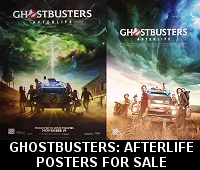

(Ghostbusters Amazon Store)

Please be aware that as an Amazon Associate, I earn a very tiny commission from purchases made though the Amazon links on this site.

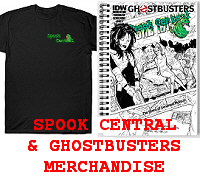
|
COMMUNITY LINKS
NEWS • Ghostbusters Wiki • GB News • GB Fans • Ghostbusters Mania • GB Reboot Facebook • Proton Charging News Archive FORUMS • GB Fans • EctoZone OFFICIAL • Ghost Corps Facebook • Ghostbusters Facebook • Ghostbusters YouTube • Ghostbusters.com |
[ MORE TRIBUTES ]

( MY COMPARISON REVIEW )
( AVOID SHIPPINGEASY/STAMPS.COM )
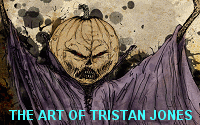
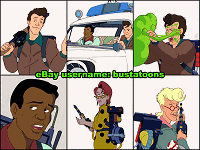
U.S. eBay (Ghostbusters stuff)
U.K. eBay (Ghostbusters stuff)


